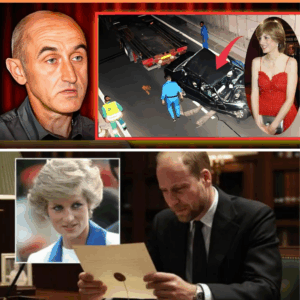The rain-slicked streets of Victoria’s Inner Harbour gleamed under the sodium glow of streetlamps on the evening of November 28, 2012, as if the city itself were weeping in anticipation. Tourists bundled against the chill milled about the grand facade of the Fairmont Empress Hotel, its turrets piercing the foggy night like forgotten sentinels. Amid the murmur of laughter and clinking glasses from within, a lone figure emerged from the shadows—a young woman, barefoot despite the biting Pacific Northwest cold, her blonde hair disheveled, eyes darting like a cornered animal. She paced the hotel’s steps, muttering to herself, hands twisting the hem of her damp sweater. Passersby averted their gazes, mistaking her distress for the eccentricities of a street performer or the ravages of a long night out. But one man, a local named Dennis Quay, saw the raw terror etched on her face. He dialed 911 at 7:15 p.m., his voice steady but urgent: “There’s a woman in severe distress outside the Empress Hotel. She looks like she might hurt herself.”
What followed was a 45-minute conversation that would etch itself into the annals of Canadian true crime—a gentle probing by two Victoria Police constables, a fleeting moment of connection, and then, nothing. The woman, 26-year-old Emma Fillipoff, gave her name when asked, but little else. She spoke of shadows trailing her, of a need to vanish into the ether, yet insisted she was fine, just “tired of the noise.” The officers, trained to spot imminent threats but not the subtle fractures of a fracturing mind, deemed her no danger to herself or others. They left her there, under the watchful eyes of the hotel’s doormen, promising to circle back. Emma watched them go, her bare feet planting firmly on the cold granite. Then, as if dissolving into the mist rolling off the harbor, she turned and walked away—toward Government Street, into the labyrinth of alleys and lights. She has not been seen since.
Thirteen years later, on the cusp of what would have been her 40th birthday, Emma Fillipoff’s vanishing remains one of Canada’s most perplexing and heart-wrenching mysteries—a puzzle of half-formed plans, whispered fears, and a red van brimming with the detritus of a life interrupted. Her family, undeterred by the relentless passage of time, clings to the belief that somewhere, in the quiet corners of this island paradise turned haunted ground, answers wait. “Every lead is a thread,” says her mother, Shelley Fillipoff, her voice a fragile bridge across the chasm of loss during a recent interview at a sun-dappled cafe overlooking the very harbor where her daughter last stood. “We’ve pulled at them all, and still, the tapestry unravels.” As Victoria swells with autumn tourists oblivious to the ghosts in its midst, the case endures—not just as a cold file in the Victoria Police Department’s missing persons unit, but as a siren call to anyone who has ever felt the pull of escape, the weight of unseen burdens, or the terror of a world closing in.
To unravel Emma’s story is to trace the fault lines of a young woman’s quiet unraveling, a narrative pieced together from shelter logs, security tapes, frantic phone calls, and the aching recollections of those who loved her most. Born January 6, 1986, in the snow-swept village of Lanark, Ontario—a place of maple forests and modest clapboard homes—Emma grew up the middle child in a tapestry of familial warmth laced with the undercurrents of divorce. Her father, James Fillipoff, a high school guidance counselor with a penchant for poetry and folk guitar, instilled in her a love for words and wanderlust. Her mother, Shelley, a resilient elementary school teacher, taught her the grit of perseverance, the two women bonding over late-night baking sessions that filled their kitchen with the scent of cinnamon and secrets shared. Emma was the dreamer of the family: a voracious reader who devoured Tolstoy and Tolkien with equal fervor, a sketch artist whose notebooks brimmed with ethereal portraits of women with windswept hair and faraway eyes. She excelled in school, her report cards glowing with praise for her empathy and imagination, but beneath the poise simmered a restlessness—a sense that the small-town rhythms of Perth, Ontario, could never contain her.
By her early twenties, that restlessness propelled her into the world. After a brief stint studying culinary arts at a community college in Campbell River, British Columbia—a chapter marred by a vague “bad experience” she later alluded to but never detailed—Emma bounced between jobs: barista in Toronto cafes, server in Vancouver bistros, even a fleeting role as a background extra on a low-budget indie film. Friends described her as magnetic yet mercurial, prone to bouts of luminous joy followed by silences that stretched like shadows. “She had this laugh that could light up a room,” recalls her childhood friend Laura McKay, now a social worker in Ottawa, during a podcast interview for CBC’s Someone Knows This in 2021. “But there were days she’d vanish into her head, sketching for hours without a word. We joked she was half-fairy, slipping between worlds.” It was this duality—the girl who baked pies for neighbors and the one who stared at crows as if reading omens—that would later haunt investigators.
In the fall of 2011, at 25, Emma chased a whisper of destiny westward. “She always said Victoria felt like home,” Shelley recounts, her fingers tracing the rim of her teacup. “Something amazing was waiting there.” Arriving with little more than a backpack and a bus ticket, Emma crashed with a childhood friend in a cramped apartment overlooking the Salish Sea. The city’s allure was immediate: the fairy-tale charm of its Victorian architecture, the briny kiss of the ocean air, the undercurrent of bohemian freedom in its buskers and bookshops. She landed a seasonal gig at Red Fish Blue Fish, a harborside seafood spot where the scent of grilled salmon mingled with the cries of gulls. Colleagues remember her as the quiet efficiency behind the counter, her smile disarming tourists while her quick wit charmed the line cooks. “Emma was the one who’d slip you an extra lemon wedge with a wink,” says former coworker Mia Chen, now a chef in Seattle, in a 2019 Globe and Mail feature. “She talked about opening her own place someday—vegan twists on West Coast classics. But by summer’s end, she seemed… adrift.”
Adrift indeed. By February 2012, financial strains and a fraying social circle led Emma to the Sandy Merriman House, a women-only shelter in Victoria’s James Bay neighborhood—a squat, unassuming building that served as both sanctuary and stark reminder of her vulnerabilities. Staff there noted her rotation in and out: a month here, a week away couch-surfing, then back when the nights grew too cold. It was a pattern born of necessity, not defeat; Emma paid her way with odd jobs, her van—a rusty 1993 red Mazda MPV she’d bought that June—becoming a mobile haven for sketches and dreams. But whispers of change crept in. She quit binge drinking cold turkey, swore off caffeine and sugar, embracing a “monk-like” veganism that left her rail-thin and radiant one day, hollow-eyed the next. Friends observed her growing reclusive, canceling plans with excuses of “needing space,” her conversations laced with paranoia about “eyes on her back.” In mid-November, she confided in a shelter mate about fleeing to Salt Spring Island or Tofino, or perhaps surprising her family with a cross-country trek home. “She was scattering plans like breadcrumbs,” says shelter volunteer Tara Ellis in the 2017 VICE documentary Vanished: The Emma Fillipoff Story. “Like she was testing doors to see which one would open.”
The breadcrumbs led to November 23, 2012—a Friday etched in surveillance grain. At the Victoria YMCA, Emma entered and exited four times in 14 frantic minutes, peering nervously through glass doors as if evading a pursuer. That midnight, she called Shelley in tears: “Mom, I want to come home. Can you book a flight?” Her voice cracked with urgency, but details evaporated like mist. Hours later, she rang back, retracting: “Don’t come. I’ll figure it out.” By Saturday, November 24, the cycle spun again—another plea for Shelley to fly west and help pack. Shelley booked the ticket, her heart pounding with maternal instinct. Sunday, November 25, brought a tow-truck run: Emma, upbeat, chatted with driver Rob Davies about snow-capped mountains and a surprise return to Ontario. “She looked at the peaks and said, ‘Sun and snow—home’s calling,'” Davies later told police, his logbook entry a fleeting snapshot of hope.
But by Tuesday, November 27, the facade cracked. Shelter staff, alarmed by Emma’s drawn curtains and rearranged furniture—”The chairs were talking to me,” she murmured—considered a wellness check but held off. That evening, she vanished from the shelter around 6 p.m., her van left parked blocks away at the Chateau Victoria hotel lot, a stone’s throw from the Empress. What transpired in those twilight hours remains a mosaic of sightings, each more unsettling than the last.
Dawn broke on November 28 with Emma at a Government Street 7-Eleven, captured on CCTV buying a prepaid phone at 7:02 a.m. She hesitated at the door, scanning the street, then returned for a $200 airtime card—funds she never activated. By midday, she was at the Central Library, poring over maps and travel guides, her bare feet tapping an anxious rhythm. Around 3 p.m., she hailed a cab from Blanshard Street, directing driver Khalid Rahman to Victoria International Airport, 25 kilometers north. Midway, near View Royal, she bolted without paying, murmuring about “needing to walk.” Rahman, puzzled, noted her disheveled state: no shoes, wild eyes, a backpack clutched like a talisman. As dusk fell, she materialized at the Empress, barefoot once more, her distress summoning Quay’s call.
The police interaction, detailed in declassified reports released in 2020, unfolds like a tragic pas de deux. Constables Lisa Duncan and Mike Horwood arrived at 7:20 p.m., finding Emma huddled on the steps, rocking gently. “She was coherent but scattered,” Duncan recounted in a 2014 fifth estate interview. “Asked her name—Emma Fillipoff. Date of birth. Said she was from Ontario, just needed quiet. We ran her name—no warrants, no alerts. She promised she’d go to a friend’s.” Horwood offered a ride to the shelter; Emma demurred, insisting on walking. At 8:05 p.m., the officers departed. Hotel valet Aiden Patel watched her linger, then drift east toward the harbor’s edge. “She looked back once, like saying goodbye to the world,” Patel told investigators. And then, the void.
Shelley Fillipoff touched down in Victoria that night, racing to Sandy Merriman House by midnight. The shelter confirmed Emma’s absence; by 3 a.m. on November 29, she was officially missing. “I felt it in my bones,” Shelley whispers now, her eyes distant. “Like she’d slipped through my fingers while I slept.” The red Mazda turned up hours later in the Chateau lot—unlocked, windows fogged, interior a time capsule: passport, laptop humming with unfinished emails, clothes folded neatly, journals brimming with poetry (“The crows know my secrets; do you?”), a pillow embroidered with sunflowers, library books on Byzantine art overdue by days. No suicide note, no packed bags—just the accoutrements of a life paused, not ended. “She wouldn’t leave without her things,” James Fillipoff insisted to media in 2013. “Emma was a planner. This was no goodbye.”
The investigation ignited with urgency, then simmered into the slow burn of frustration. Victoria Police’s Missing Persons Unit, led by Sgt. Pete Woods, chased over 200 leads: tips of sightings in Vancouver’s Gastown, whispers of a woman matching her description busking in Seattle, even a cryptic Craigslist ad for “lost sketches” in Portland. In May 2014, a Vancouver couple, Joel and Lori Sellen, reported a man dumping flyers bearing Emma’s face into a dumpster—$25,000 reward posters, soggy and discarded. The man vanished before questioning; CCTV yielded nothing. Her prepaid card surfaced in Esquimalt, used for cigarettes by an unknown buyer. Searches scoured beaches from Ogden Point to Sooke, divers combing the Salish Sea for signs of drowning. Nothing.
A breakthrough glimmered in June 2018, when “William,” a Colwood resident, came forward: the morning after, he’d picked up a hitchhiker near the Empress—a barefoot blonde, mid-20s, chattering about “starting over in the suburbs.” She asked for a drop-off near Metchosin Road; he obliged, unsettled by her vacant stare. “She clutched that backpack like it held her soul,” William told the Times Colonist. Police mobilized: ground searches in View Royal’s wooded fringes, cadaver dogs sniffing fern-choked trails, even psychic consultations funded by the family. December 2018’s dig unearthed bones—animal, not human. A follow-up in 2019 faltered on weather; by 2020, the lead cooled, though Woods vows, “It’s not closed. William’s story fits too neatly to dismiss.” Other threads: a 2015 tip of Emma spotted in a Tofino yoga retreat, debunked by fingerprints; a 2022 claim of her living off-grid in the Okanagan, traced to a lookalike.
Theories swirl like harbor fog, each a dagger to the family’s resolve. Foul play looms largest: Victoria’s underbelly in 2012 teemed with predators—the serial assaults near the harbor, the unsolved murders of sex workers in the nearby DTES. “Someone saw her vulnerability and pounced,” posits criminologist Kate McLachlan in her 2022 book Ghosts of the Gulf Islands. The Empress’s proximity to transient hostels fuels speculation of abduction, perhaps by a john or dealer Emma brushed off. Yet no body, no ransom—silence. Suicide tugs at hearts, given her documented despair: shelter notes of “suicidal ideation,” the barefoot wanderings evoking a final, deliberate drift into the sea. “The ocean calls to the broken,” muses Shelley, who walks the breakwater weekly, scattering wildflowers. But the van’s bounty argues against it—no note, belongings intact.
Voluntary disappearance, the cruelest cut, whispers of agency: Emma, the eternal seeker, staging her exit to shed skins. Her journals brim with escape fantasies—”To vanish is to be reborn”—and that prepaid phone hinted at untraceable horizons. “She was running from something, or to something,” Laura McKay reflects. “Maybe she succeeded.” Mental health deterioration overlays all: undiagnosed bipolar, trauma from Campbell River, the isolation of shelter life eroding her edges. Psychiatrist Dr. Elena Vasquez, consulting on the case pro bono, tells Maclean’s in 2023: “Emma’s behaviors—paranoia, withdrawal—scream untreated episode. She may have walked into the wilderness of her mind and never returned.”
Media has amplified the ache, transforming Emma from statistic to specter. CBC’s 2014 fifth estate episode Finding Emma Fillipoff drew 1.2 million viewers, its reenactments of the Empress encounter chilling in their banality. VICE’s 2017 deep-dive unearthed shelter footage of Emma dancing alone to Fleet Foxes, a poignant counterpoint to her unraveling. Podcasts like The Vanishing Point (2021) and Unsolved Mysteries (Netflix, 2020) dissected theories, spawning Reddit forums where armchair sleuths parse timelines. The family’s site, helpfindemmafillipoff.ca—launched by Shelley in 2013—pulses with updates: annual billboards along Highway 1, $50,000 reward (upped in 2024), QR codes linking to her sketches. “We won’t stop,” James declares in a 2025 video appeal, his voice gravel with grief. “Emma’s out there, or her story is. Someone knows.”
The toll on the Fillipoffs is a quiet cataclysm. Shelley, once a classroom beacon, retired early, her days now a vigil of volunteer searches with the Victoria Search and Rescue. Siblings—brother Liam, a Toronto engineer; sister Gillian, an artist in Calgary—grapple with survivor’s guilt, their holidays shadowed by empty chairs. “We celebrate her birthday with pie,” Gillian shares via Zoom, tears tracing laugh lines. “Cinnamon apple, her favorite. And we talk—as if she’s in the next room.” Romantic entanglements faded; James’s second marriage frayed under the strain. Yet resilience blooms: Shelley’s advocacy birthed the Fillipoff Act (proposed 2024), mandating mental health checks for at-risk missing persons. “Emma’s teaching us still,” she says. “To fight the dark with light.”
As 2025 unfolds, hope flickers anew. A fresh tip in July—Emma-like figure in a Nanaimo co-op—prompted a canvass; forensics on van trace DNA yielded a partial match to an unknown male, reigniting foul-play probes. Woods, graying but unbowed, briefs the family monthly: “Tech’s evolving—facial rec, genetic genealogy. We’ll find her.” Public appeals persist: posters in every ferry terminal, PSAs on CKOM radio, even a mural in James Bay depicting Emma mid-stride, bare feet defiant.
In the end, Emma Fillipoff’s vanishing isn’t mere absence—it’s a mirror to our frailties: the thin veil between presence and oblivion, the cries we miss in the crowd. Thirteen years on, as Victoria’s lights dance on the harbor, her family stands sentinel. “She walked away that night,” Shelley murmurs, gazing at the Empress from afar. “But we’re still walking toward her.” To the silent witnesses, the tip-line waits: 1-855-669-9477. Somewhere, in the spaces between, Emma’s echo lingers.





